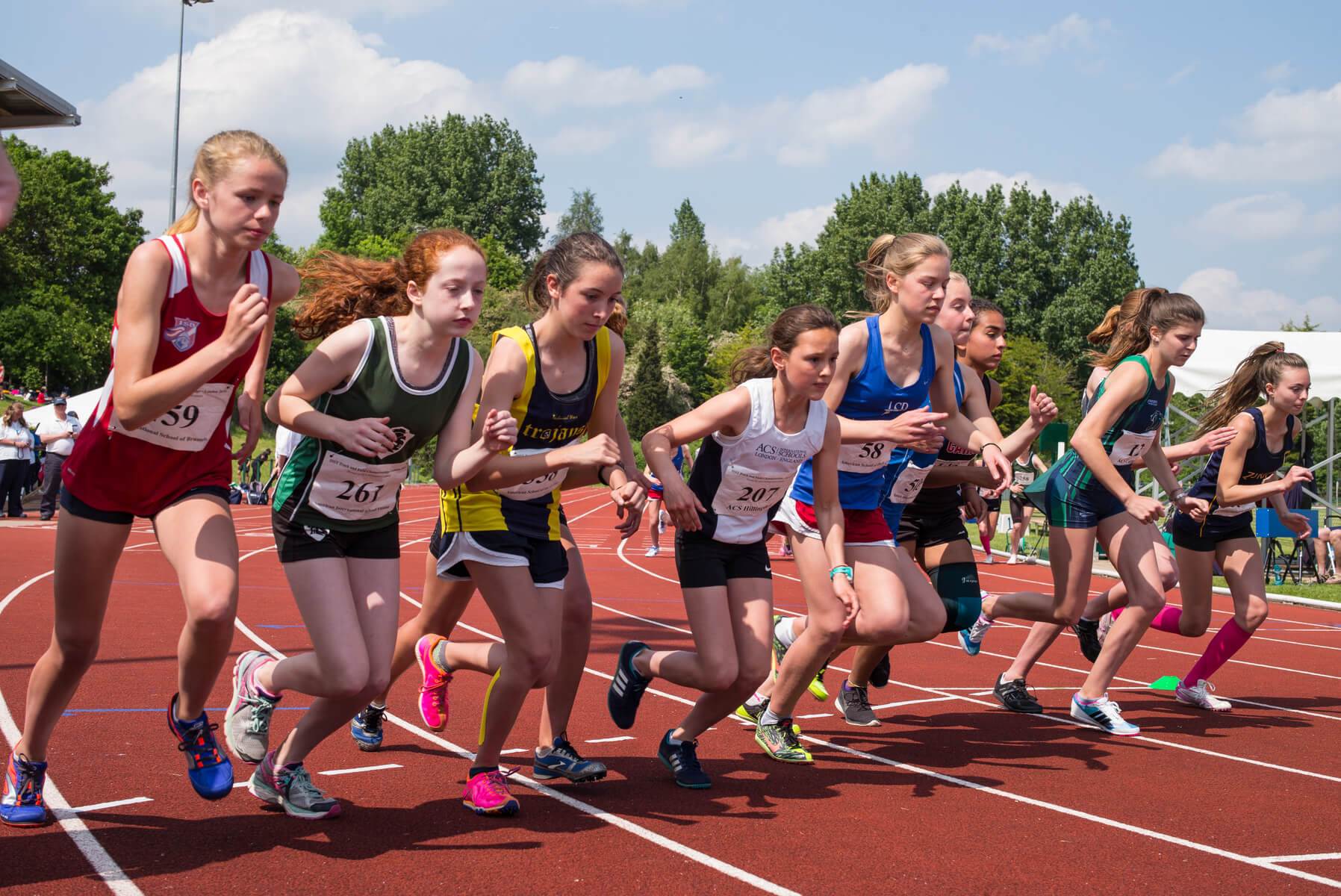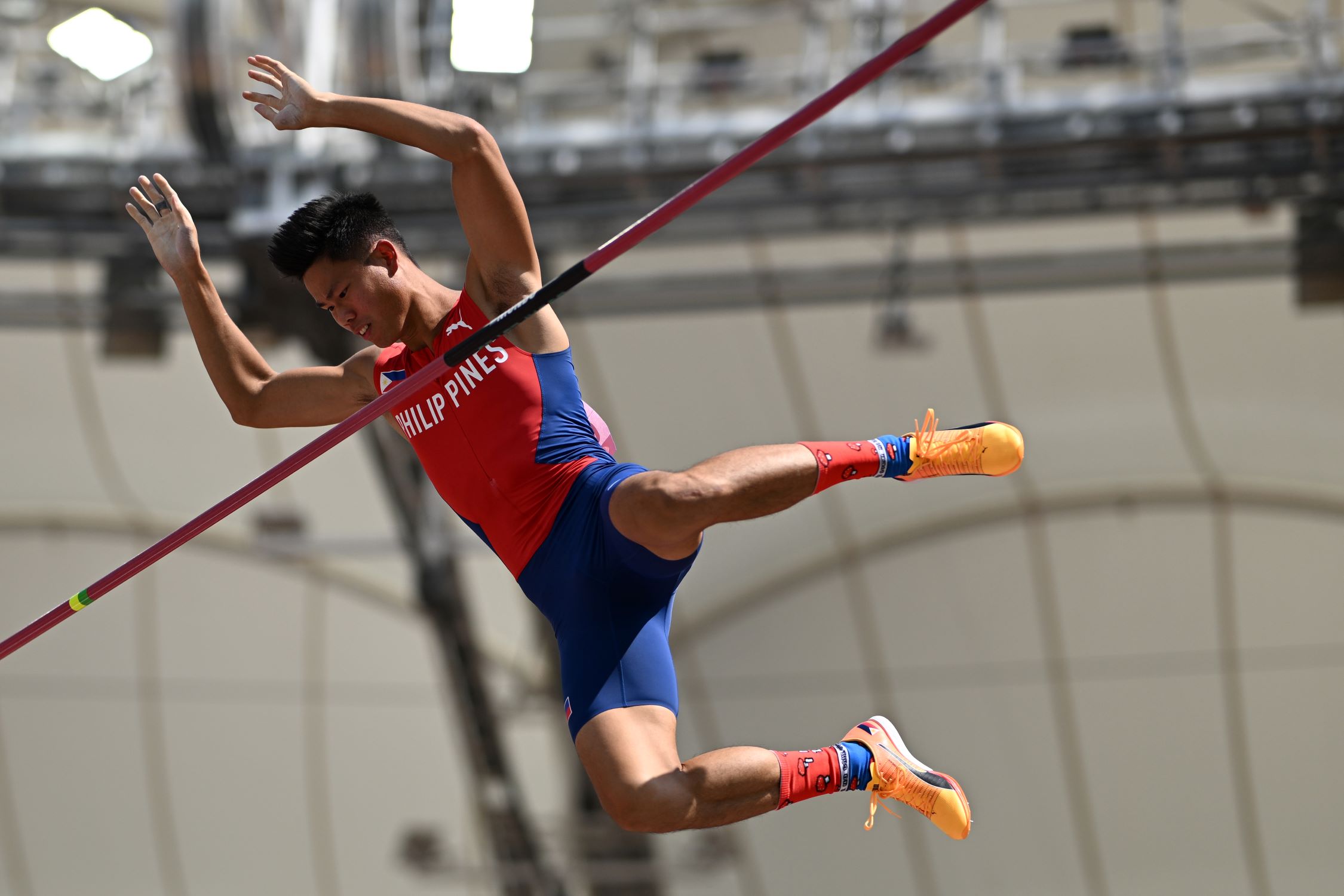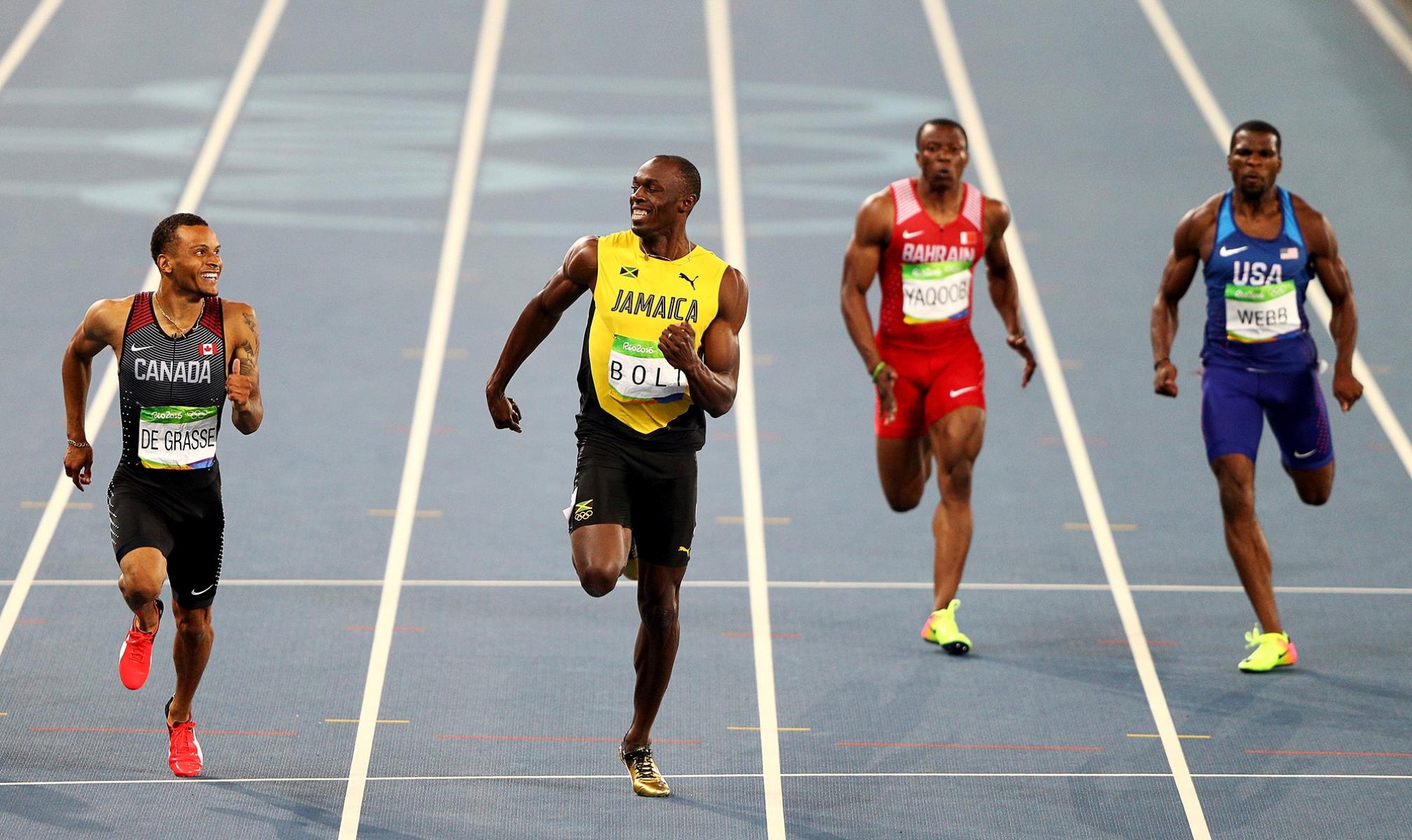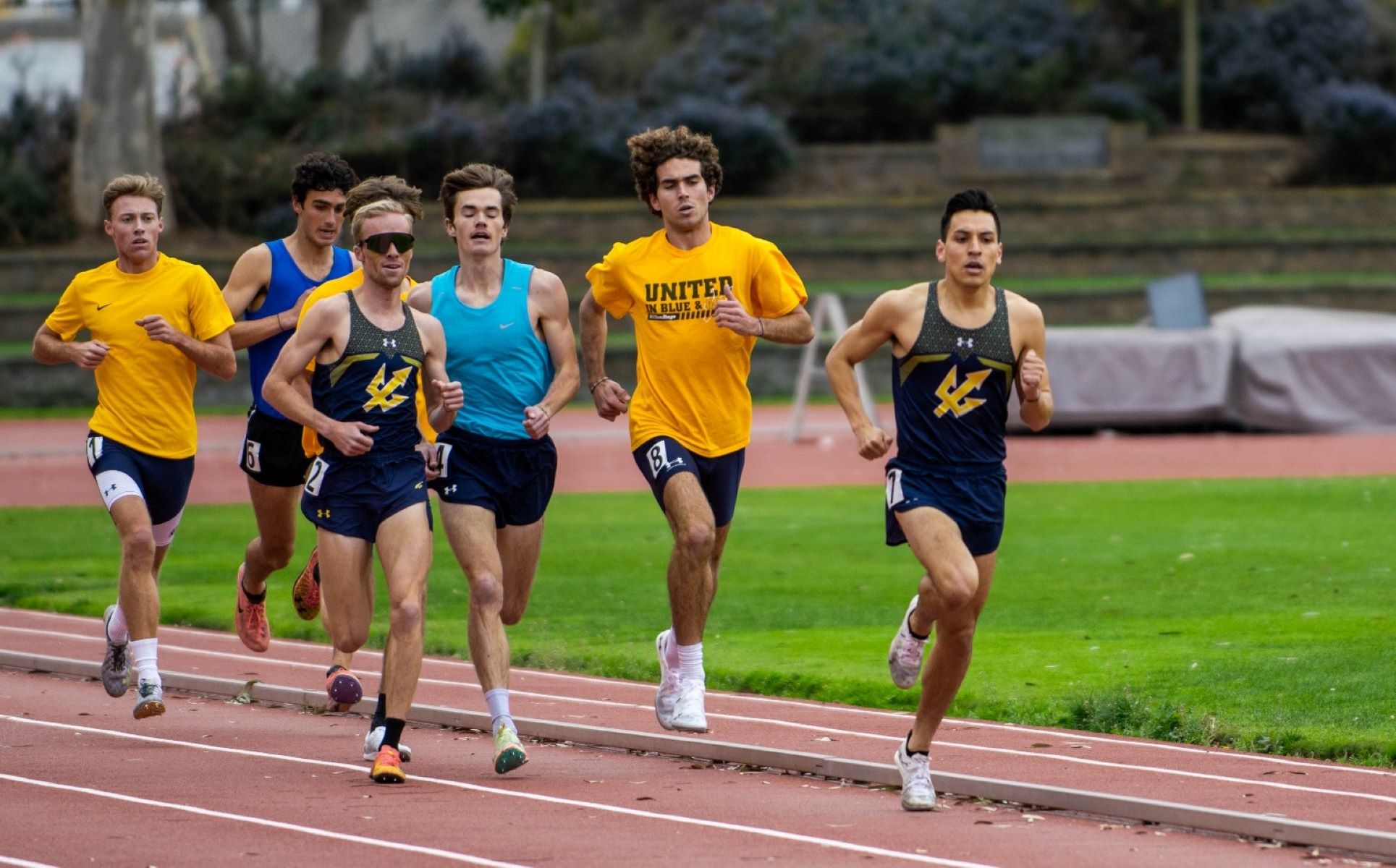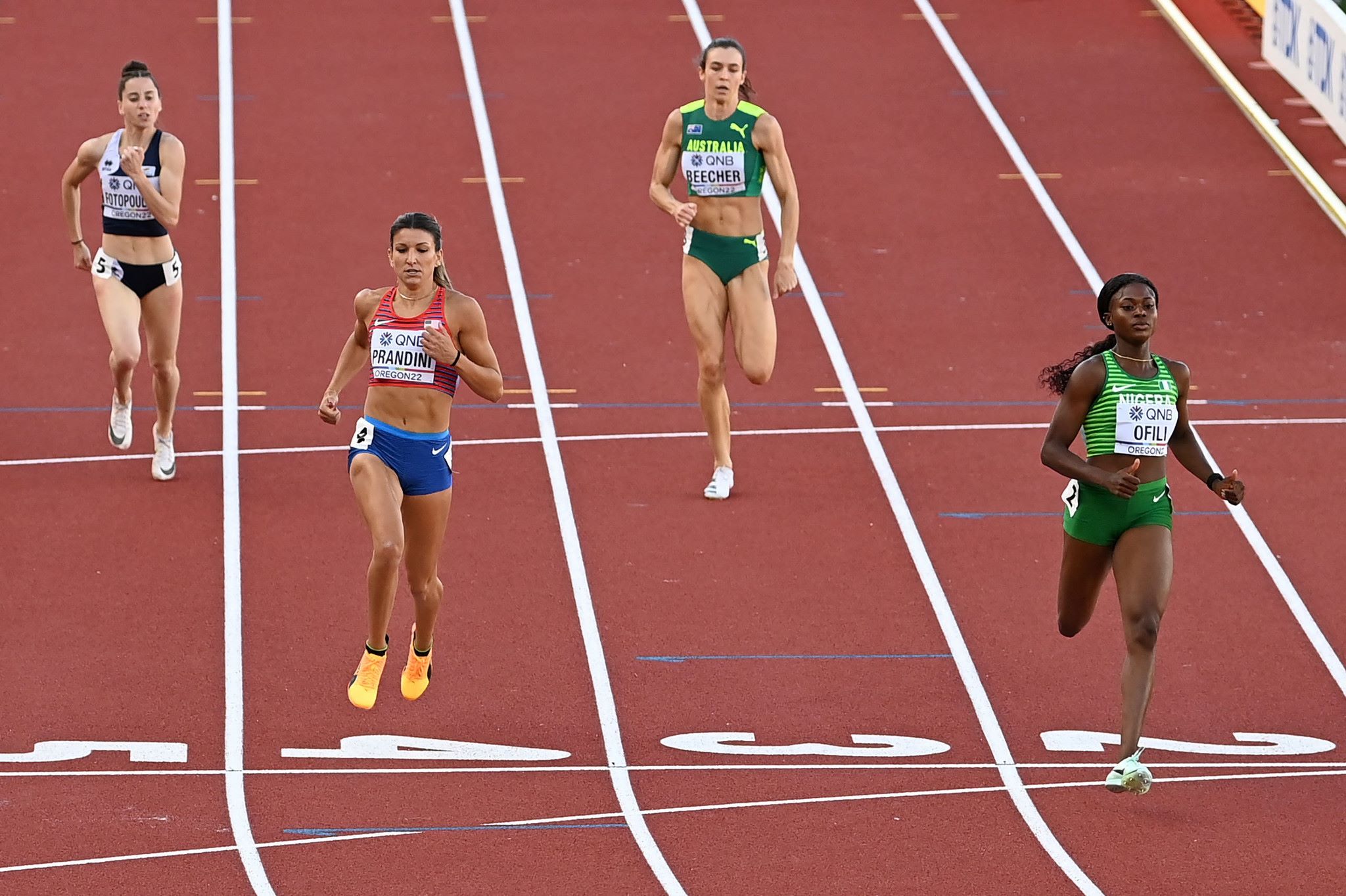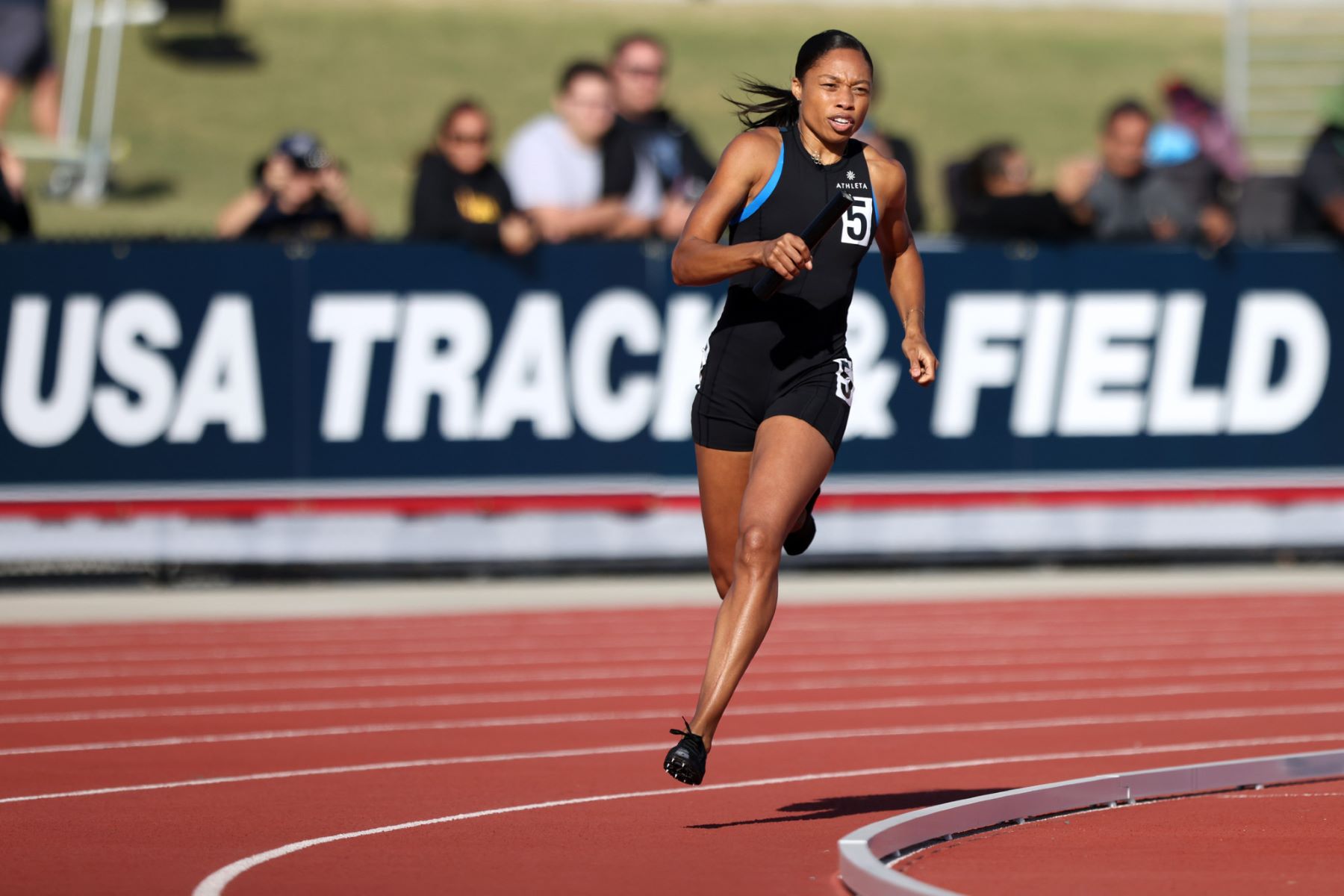

Featured
When Do The Track And Field Events Start
Published: September 16, 2023
Get ready for the excitement of featured track and field events. Find out when they start and plan your schedule for an unforgettable experience.
Introduction
Welcome to the exciting world of track and field events! Whether you are a passionate athlete, a dedicated fan, or simply curious about this thrilling sport, this article will provide you with a comprehensive guide to when the various track and field events start.
Track and field is a collection of athletic events that tests both the speed and endurance of athletes. It is a sport that has captivated audiences for centuries, with its origins dating back to ancient civilizations. Today, it continues to be one of the most popular sporting events around the world, captivating millions with its raw athleticism and competitive spirit.
With a wide range of events encompassing sprints, hurdles, middle-distance and long-distance races, relays, jumps, throws, and combined events, track and field offers something for everyone. Whether you are a fan of the adrenaline-fueled sprints, the graceful jumps, or the explosive throws, there is sure to be an event that will leave you in awe.
Track and field events are organized into various levels of competition, ranging from local meets to national championships and international competitions such as the Olympics. The timing and scheduling of these events can vary depending on the level of competition and the location.
In this article, we will walk you through the different track and field events and provide you with an overview of when they typically start. From the thrilling sprint events to the challenging hurdles, the tactical middle-distance races to the grueling long-distance events, the nail-biting relay races to the gravity-defying jumps, the explosive throws to the demanding combined events, we will cover it all.
So, if you’re ready to dive into the world of track and field and discover when your favorite events begin, let’s get started!
Sprint Events
Sprint events are the epitome of speed and power in track and field. These events showcase the explosive acceleration and raw athleticism of the athletes. The sprint events include the 100m, 200m, and 400m races, as well as the relay races.
The 100m race is often considered the most prestigious event in track and field. It is a pure test of speed, with athletes attempting to cover the distance in the shortest amount of time possible. The world record for the men’s 100m sprint is currently held by Usain Bolt, with a blazing time of 9.58 seconds.
The 200m race is another thrilling sprint event that requires a combination of speed and endurance. Athletes must maintain their momentum throughout the curve of the track and push themselves to the finish line. The world record for the men’s 200m sprint is also held by Usain Bolt, with a time of 19.19 seconds.
The 400m race is a unique event that combines elements of both sprinting and endurance. Athletes must possess both speed and stamina to excel in this race. It is often referred to as the “one-lap race” due to the distance covered in a single lap of the track. The men’s world record for the 400m race is held by Wayde van Niekerk, with a time of 43.03 seconds.
In addition to the individual sprint events, relay races add an extra level of excitement and team dynamics to the sprinting discipline. The most common relay races are the 4x100m and 4x400m relays, where teams of four athletes each take turns running a portion of the race. The baton exchange between teammates is a crucial element in these events, adding an element of drama and coordination.
Sprint events are typically scheduled early in track and field competitions to set the tone and build excitement. These events often draw large crowds and are known for the electrifying atmosphere they create. Athletes train tirelessly to perfect their technique and maximize their speed, making sprint events a must-watch for any track and field enthusiast.
So, if you’re a fan of blistering speed and jaw-dropping acceleration, make sure to mark your calendars for the sprint events in your favorite track and field competitions. They are guaranteed to leave you on the edge of your seat, witnessing the incredible feats of these lightning-fast athletes.
Hurdles Events
Hurdles events are a thrilling and visually captivating discipline in the world of track and field. These events require athletes to combine speed, agility, and technique as they navigate a series of hurdles along the track. The goal is to clear each hurdle successfully and reach the finish line in the shortest amount of time possible.
The hurdles events are divided into different distances, including the 110m hurdles for men and the 100m hurdles for women. These races are not only about running at top speed but also about maintaining rhythm and timing while clearing each hurdle.
In the men’s 110m hurdles, athletes must powerfully stride and leap over 10 hurdles, each 1.067 meters high. The world record for this event is held by Aries Merritt, who completed the race in an astonishing 12.80 seconds.
For women, the 100m hurdles require the same level of skill and precision. Competitors must navigate 10 hurdles, each 0.84 meters high. The women’s world record in this event is held by Kendra Harrison, who blazed through the course in a remarkable 12.20 seconds.
The allure of hurdles events lies in the combination of speed and technique. Athletes must not only sprint between the hurdles but also have the ability to seamlessly jump over them without losing momentum. The proper form and timing of clearing each hurdle is crucial to shaving off precious seconds from their race times.
Similar to the sprint events, hurdles events bring an exhilarating atmosphere to track and field competitions. The suspense of seeing athletes gracefully leap over the barriers while maintaining their speed is captivating for both athletes and spectators alike. The crowd’s cheers echo as athletes soar over the hurdles, pushing the boundaries of their athletic ability.
When it comes to scheduling, hurdles events are often woven into the track program alongside the sprint events. This allows for a seamless transition between the two disciplines and keeps the momentum and excitement building throughout the competition.
If you’re a fan of awe-inspiring athleticism and precision, be sure to catch the hurdling events in your favorite track and field competitions. These events showcase the skill, determination, and grace of the athletes as they conquer the obstacles in their path and strive for victory.
Middle Distance Events
Middle distance events are the perfect blend of speed and endurance in track and field. These races require athletes to maintain a fast pace for a significant distance, testing both their speed and stamina. Middle distance events typically range from 800 meters to 1500 meters, and they showcase the strategic and tactical elements of running.
The 800m race is a true test of speed and endurance. Athletes must strike a delicate balance between maintaining a fast pace and conserving energy for the final sprint. The world record for the men’s 800m race is held by David Rudisha, who completed the race in an astonishing 1 minute 40.91 seconds.
In the women’s 800m event, athletes display their strength and endurance as they power through the race. The world record is held by Jarmila Kratochvílová, with a time of 1 minute 53.28 seconds.
The 1500m race is a thrilling middle distance event that combines both speed and tactics. Athletes must have the ability to increase their pace throughout the race while conserving energy for the final stretch. The men’s world record for the 1500m race is currently held by Hicham El Guerrouj, with a blistering time of 3 minutes 26.00 seconds.
For women, the world record in the 1500m event is held by Genzebe Dibaba, who finished the race in an impressive time of 3 minutes 50.07 seconds. These record-breaking performances highlight the incredible skill and endurance required to excel in middle distance events.
One of the fascinating aspects of middle distance races is the strategic element. Athletes must be mindful of their positioning and anticipate the moves of their competitors. The ability to time surges in pace and manage the different stages of the race is crucial for success.
When it comes to scheduling, middle distance events are often placed strategically in track and field competitions. They provide a bridge between the explosiveness of sprint events and the endurance of long-distance races. The pacing and tactics employed in middle distance events make them a captivating spectacle for fans.
If you appreciate the delicate balance between speed and endurance, be sure to mark your calendar for the middle distance events in your favorite track and field competitions. These races offer a dynamic and strategic display of athletic prowess that is sure to leave you in awe.
Long Distance Events
Long distance events in track and field are a true test of endurance and mental toughness. These races push athletes to their limits as they cover long distances while maintaining a steady pace. Long distance events typically range from 3000 meters to marathons, and they require a unique combination of physical and mental strength.
The 5000m race is a demanding long distance event that showcases the ability to sustain speed over a significant distance. Athletes must strike a balance between maintaining a fast pace and conserving energy for the final laps. The world record for the men’s 5000m race is held by Joshua Cheptegei, with a time of 12 minutes 35.36 seconds.
Another challenging long distance event is the 10,000m race. Athletes must possess both physical endurance and mental fortitude to conquer this grueling event. The men’s world record for the 10,000m race is held by Kenenisa Bekele, who completed the race in an astonishing 26 minutes 17.53 seconds.
For women, the 5000m and 10,000m races are equally demanding. The women’s world record in the 5000m event is held by Letesenbet Gidey, with a time of 14 minutes 6.62 seconds. The women’s 10,000m world record is held by Almaz Ayana, with an incredible time of 29 minutes 17.45 seconds.
Marathons are the ultimate test of endurance in track and field. These races cover a distance of 42.195 kilometers and require athletes to maintain a steady pace for an extended period. The world record for the men’s marathon is held by Eliud Kipchoge, who completed the race in a jaw-dropping 2 hours, 1 minute, and 39 seconds. Brigid Kosgei currently holds the women’s world record with a time of 2 hours, 14 minutes, and 4 seconds.
Long distance events are often scheduled to take place towards the end of track and field competitions. These races draw admiration from both athletes and spectators for the sheer determination and endurance showcased by the competitors. The excitement builds as the finish line approaches, and athletes dig deep to find the strength to complete the long journey.
If you appreciate the mental and physical fortitude required to conquer long distances, make sure to mark your calendar for the long distance events in your favorite track and field competitions. Witness the incredible displays of endurance and perseverance as athletes push their limits and strive for greatness.
Relay Events
Relay events are a thrilling and dynamic component of track and field competitions. These events not only showcase the individual speed and skill of athletes but also highlight the importance of teamwork and seamless baton exchanges. Relay races add a layer of excitement as teams of athletes work together to cover designated distances in the shortest time possible.
The most common relay events are the 4x100m and 4x400m relays. In the 4x100m relay, teams of four athletes each run a 100-meter leg before handing off the baton to the next teammate. The baton exchange is a crucial moment in this event, requiring precise timing and coordination to maintain momentum. The world record for the men’s 4x100m relay stands at 36.84 seconds, set by the Jamaican team at the 2012 Olympics. For women, the world record in the 4x100m relay stands at 40.82 seconds, achieved by the United States at the 2012 Olympics.
The 4x400m relay is a test of both speed and endurance. In this event, each member of the team covers a 400-meter leg while passing the baton to the next runner. The transitions between teammates are critical, and the teams strategize to maximize their speed on each leg. The men’s world record in the 4x400m relay is held by the United States, with a time of 2 minutes 54.29 seconds, set in 1993. For women, the world record is held by the Soviet Union, with a time of 3 minutes 15.17 seconds, set in 1988.
Relay events bring a unique level of excitement to track and field competitions. The baton exchanges, the teamwork, and the intense competition make for a captivating spectacle. The crowd’s cheer reaches a crescendo as each athlete sprints down the track, striving to maintain their team’s lead or overcome the opposition.
Relay events are typically scheduled to take place alongside other track events, adding a thrilling race to the program. The energy and excitement build as the batons are passed, and athletes push themselves to their limits, knowing that the success of the team relies on their performance.
Being a part of a relay team requires trust, synchronization, and a shared goal. Athletes must train together, honing their baton exchange techniques and perfecting their individual speed, in order to achieve seamless teamwork. The camaraderie and unity displayed in relay events make them a testament to the power of collaboration in the world of sports.
If you enjoy the combination of individual talent and team dynamics, be sure to catch the relay events in your favorite track and field competitions. Witness the speed, skill, and teamwork as athletes strive for glory and race towards victory, hand in hand.
Jump Events
Jump events in track and field are a display of explosive power, technique, and finesse. These events require athletes to harness their strength and agility to soar through the air and achieve impressive distances or heights. Jump events consist of the long jump, high jump, triple jump, and pole vault.
The long jump is a classic event that tests an athlete’s ability to launch themselves into the air and cover as much distance as possible. Competitors sprint down the runway before taking off at the designated take-off board. The world record for the men’s long jump is held by Mike Powell, who leaped an incredible 8.95 meters in 1991. The women’s world record is held by Galina Chistyakova, who achieved a distance of 7.52 meters in 1988.
The high jump challenges athletes to clear an upwardly-placed bar without knocking it over. Athletes use a variety of techniques, including the Fosbury Flop and the Scissor Kick, to achieve maximum height. In the men’s high jump, Javier Sotomayor holds the world record with a clearance of 2.45 meters in 1993. The women’s world record is held by Stefka Kostadinova, who cleared an astonishing 2.09 meters in 1987.
The triple jump is a blend of speed, strength, and technique. Athletes sprint down the runway before taking off with one foot and landing on the same foot, followed by a hop and a jump. The combined distances of these three jumps determine the overall distance achieved. The men’s world record in the triple jump is held by Jonathan Edwards, who leaped 18.29 meters in 1995. In the women’s event, the world record is held by Inessa Kravets, with a distance of 15.50 meters in 1995.
One of the most technically demanding jump events is the pole vault. Athletes use a long and flexible pole to propel themselves over a bar. They must possess a combination of speed, strength, and acrobatic skill to clear ever-increasing heights. The men’s world record in the pole vault is held by Armand Duplantis, who cleared an incredible height of 6.18 meters in 2020. The women’s world record is held by Yelena Isinbayeva, who reached a height of 5.06 meters in 2009.
Jump events provide an awe-inspiring spectacle for spectators, as athletes defy gravity and reach astonishing heights or distances. Each jump is a result of years of dedicated training, impeccable technique, and a fearless mindset. Competitors push themselves to their limits, often setting new records and breaking boundaries.
These events are typically scheduled strategically in a track and field program, allowing for an engaging and visually captivating experience for both athletes and spectators. The soaring leaps, gravity-defying heights, and nail-biting clearances make jump events a must-watch for any track and field enthusiast.
If you’re a fan of remarkable athleticism and the thrill of defying gravity, make sure to catch the jump events in your favorite track and field competitions. Witness the power, grace, and skill as athletes launch themselves into the air and achieve extraordinary feats.
Throw Events
Throw events in track and field are a showcase of strength, technique, and precision. These events require athletes to propel various implements such as the shot put, discus, javelin, and hammer, with maximum force and accuracy. Throw events test the ability to generate power and control as athletes strive to achieve impressive distances or heights.
The shot put is a test of explosive strength and technique. Athletes must exert power to launch a heavy metal ball, known as a shot, as far as possible. The world record for the men’s shot put is held by Randy Barnes, who threw an incredible distance of 23.12 meters in 1990. In the women’s event, Natalya Lisovskaya holds the world record with a throw of 22.63 meters in 1987.
The discus throw requires a combination of strength and coordination. Competitors spin around in a circle before releasing a heavy disc to sail through the air. The world record for the men’s discus throw is held by Jürgen Schult, who achieved an astonishing distance of 74.08 meters in 1986. The women’s world record is held by Gabriele Reinsch, who threw 76.80 meters in 1988.
Javelin throwers must generate speed and explosive power to achieve maximum distance. Athletes launch a spear-like implement, known as a javelin, with precise technique and timing. The men’s world record for the javelin throw is held by Jan Železný, who threw an incredible distance of 98.48 meters in 1996. The women’s world record is held by Barbora Špotáková, who achieved a distance of 72.28 meters in 2008.
The hammer throw is a spectacle of strength and control. Athletes spin around multiple times before letting go of a heavy ball attached to a wire, known as the hammer. The men’s world record in the hammer throw is held by Yuriy Sedykh, who threw a remarkable distance of 86.74 meters in 1986. The women’s world record is held by Anita Włodarczyk, who achieved a distance of 82.98 meters in 2016.
Throw events require meticulous technique, hours of focused training, and explosive power to achieve impressive results. These events often draw a crowd as spectators marvel at the incredible strength and precision displayed by the athletes.
The scheduling of throw events in track and field competitions is carefully planned to ensure a balanced program and maintain the audience’s engagement. The suspense builds as athletes step into the throwing circles and unleash their power to achieve remarkable distances or heights.
If you appreciate the combination of strength, technique, and precision, make sure to watch the throw events in your favorite track and field competitions. Witness the raw power and finesse as athletes push their limits and launch implements through the air, leaving spectators in awe.
Combined Events
Combined events, also known as multi-events or decathlon for men and heptathlon for women, are the ultimate test of versatility and all-around athleticism in track and field. These events require athletes to compete in multiple disciplines over a span of two days, showcasing their skills across various track and field events.
The decathlon consists of ten events covering different categories, including sprinting, jumping, throwing, and endurance. These disciplines include the 100m, long jump, shot put, high jump, 400m, 110m hurdles, discus throw, pole vault, javelin throw, and the 1500m. Competitors accumulate points based on their performance in each event, with the overall winner recognized as the most accomplished athlete across multiple aspects of track and field.
Similarly, the heptathlon for women comprises seven events: the 100m hurdles, high jump, shot put, 200m, long jump, javelin throw, and the 800m. Athletes must demonstrate a balance of speed, power, technique, and endurance to excel in each discipline and accumulate points to claim victory.
Combined events require exceptional versatility as athletes navigate through different skills and techniques. Competitors must possess qualities such as speed and explosiveness for the sprints and jumps, strength for the throws, and endurance for the middle- and long-distance races.
Each event in the combined events carries its unique challenges. Athletes must excel in multiple disciplines while managing their physical and mental energy over the two-day competition period. The consistency and performance across all events separate the truly elite athletes from the rest.
The scheduling of combined events varies based on the competition format. In major track and field meets, these events are often spread across the two-day program, with specific event categories occurring at designated times. This allows for a more engaging experience, as spectators witness the progression of athletes’ performances over the course of the competition.
Combined events captivate audiences, as these athletes strive to push their limits across multiple disciplines and demonstrate their versatility. The intensity and drama build as athletes juggle their strengths and weaknesses from one event to the next, constantly fighting for points and podium positions.
If you appreciate the complete all-around athleticism and versatility displayed by athletes, then the combined events are a must-watch in track and field competitions. Witness the raw determination and skill as athletes compete in multiple events, showcasing their abilities across various disciplines to emerge as the ultimate track and field athlete.
Conclusion
Track and field events encompass a wide range of disciplines that showcase the incredible athleticism, skill, and determination of athletes. From the lightning-fast sprints to the gravity-defying jumps, from the explosive throws to the strategic middle-distance races, and from the thrilling hurdles to the demanding combined events, there is something for everyone in this captivating sport.
Whether you’re a dedicated athlete, an enthusiastic fan, or simply someone who appreciates the beauty of human potential, track and field events offer a breathtaking display of physical prowess. These events bring together athletes from all walks of life who have honed their skills and trained relentlessly to compete at the highest level.
Track and field competitions provide a platform for athletes to push their limits, surpass their personal bests, and strive for greatness. The excitement and suspense of watching athletes soar through the air, sprint down the track, or unleash their power in a throw create an electrifying atmosphere that draws in spectators from around the world.
Behind each event is a story of dedication, sacrifice, and triumph. Athletes spend countless hours refining their technique, improving their strength and endurance, and perfecting their mental game. They overcome obstacles, both physical and mental, to achieve their goals and leave a lasting legacy in the sport.
Whether it’s witnessing the explosive speed of a sprinter, the grace of a high jumper, the precision of a thrower, or the strategic prowess of a middle-distance runner, track and field events leave a lasting impression. These events inspire us to push beyond our limits, chase our own personal records, and appreciate the remarkable achievements of athletes.
So, whether you immerse yourself in the nail-biting sprints, the mesmerizing jumps, the powerful throws, or the tactical races, track and field events are sure to leave you in awe. They embody the essence of human potential, pushing the boundaries of what we believe is possible.
Next time you have the opportunity, make sure to watch the track and field events and experience the thrill firsthand. Support the athletes, celebrate their triumphs, and be a part of the rich history and tradition of this incredible sport.

